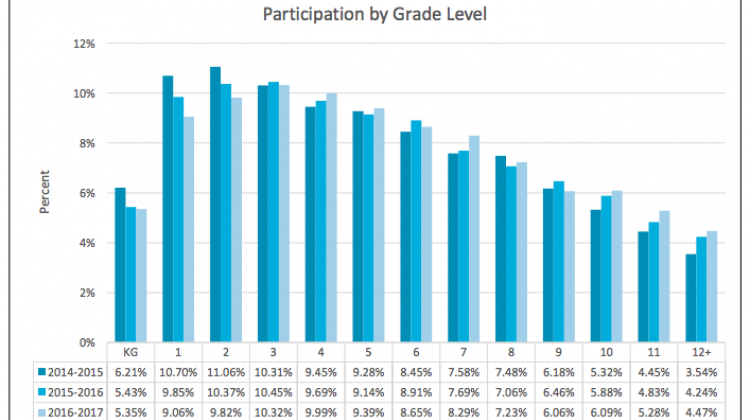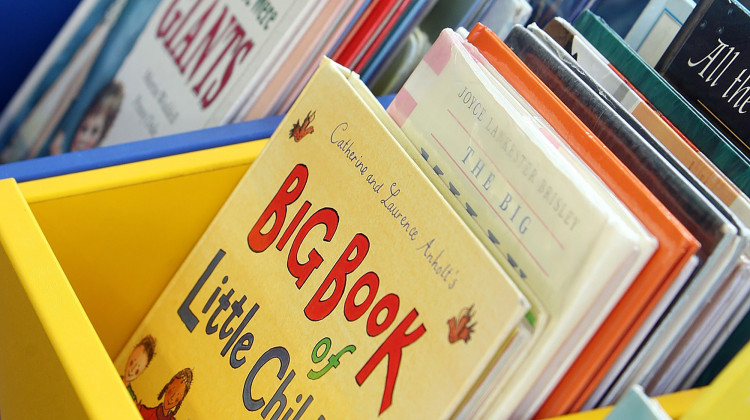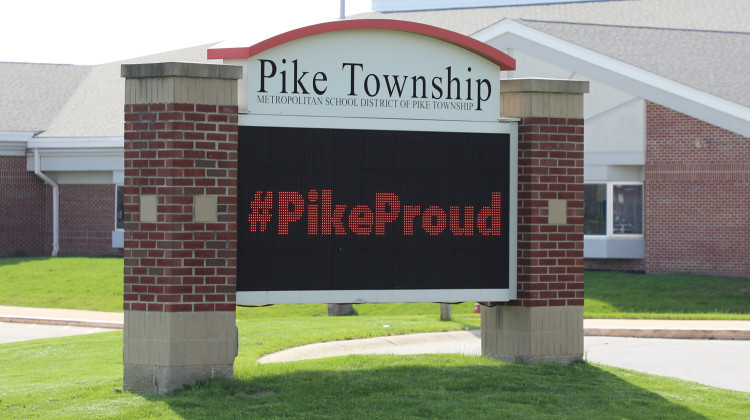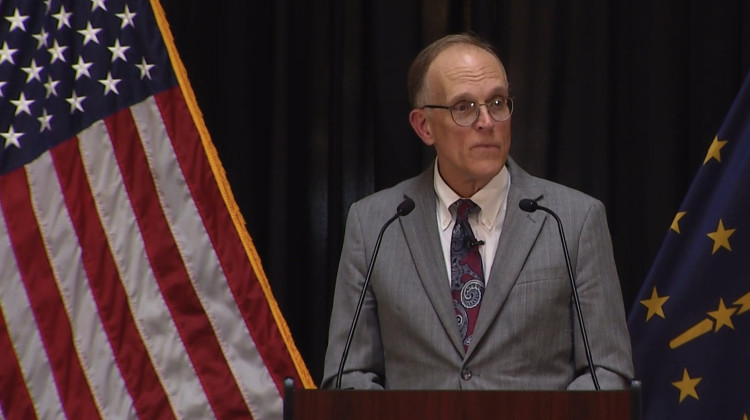
Graphic showing the Indiana Choice Scholarship Program participants by grade level for 2016-17 and previous years.
Indiana DOEFor the first time the number of Hoosier students using publicly-funded vouchers to attend a private school reached 3 percent of statewide enrollment, according to a new report.
Indiana’s Choice Scholarship Program hit a record 34,299 students this academic year using the controversial tuition support but the overall growth of the program appears to be slowing down.
The state paid out $146 million in scholarships this year across 313 private schools, which is $14.5 million more than last school year.
The top five private schools with the most students in the voucher program this year are in Fort Wayne. Bishop Dwenger High School in Fort Wayne is at the top with 450 students.
The Choice Scholarship Report, released by the Indiana Department of Education, also shows only a 5 percent increase of new students in the program for the 2016-17 school year compared to 2015-16.
Past years saw more rapid growth. In 2015-16, there was an 12 percent increase in students. In 2014-15, enrollment in the program surged by 47 percent.
This year’s count of students in the program is an increase of 776 percent percent since when it began in the 2011-12 school year. Initially, only poor families who previously attended a public school – or were using a tax credit scholarship – qualified to use vouchers to pay tuition at a private or religious school.
But a broadening of eligibility requirements in recent years by the Republican-dominated General Assembly allowed many more students to attend. Such as, income requirements expanded to 200 percent of the amount to qualify for the federal free or reduced lunch program.
Families can qualify for the program by meeting the requirements of seven pathways. Legislation under debate now at the Statehouse would add an additional pathway for families who are accepted into the state On My Way Pre-K program.
When lawmakers approved the Choice Scholarship program in 2011, they and advocates said it would save the state money. That's because vouchers provide either 50 or 90 percent of the amount of state-funding a public school corporation receives for each student. The money is then used to pay a student's tuition at a private school.
The program saw a savings of around $4 and 5 million a year in the first two years and was distributed to public schools. A formula included in the original legislation was used to calculate the savings of students leaving public schools and attending a private school with a voucher.
But since 2013-2014, students were no longer qualified to attend a public school before applying for a voucher, and the savings became a deficit based on the formula. Last year, the deficit was $53.2 million.
Superintedent Jennifer McCormick has called for more transparency in how the Choice Scholarship Program is funded. But so far, lawmakers this session have not approved changes that would create a separate funding stream for vouchers.
The IDOE did not use the formula this year to calculate the program's savings, said spokesman Adam Baker.
"The formula for this calculation was developed before the expansion to the current pathways and does not include all students, as it only includes students that were eligible under the Two Semester Pathway," he said in an email. "Therefore, the amount can be misleading as it does not show a true depiction of what the cost/benefit situation is."
According to the report:
- Voucher awards totaled $146 million for 2016-17, an increase of last year’s $134.74 million.
- 4,680 students living in the boundary of Fort Wayne Community Schools are using vouchers.
- 3,453 students living in the boundary of Indianapolis Public Schools are using vouchers.
- 313 schools are part of the program, a decrease of three.
- White students make up 60 percent of those in the program.
- The percentage of students applying under the “Continuing Choice” pathway increased from 67.88 percent in the 2015-2016 school year to 72.95 percent this school year. All other pathways saw a decrease in percentage of participation from 2015-2016.
Contact WFYI education reporter Eric Weddle at eweddle@wfyi.org or call (317) 614-0470. Follow on Twitter: @ericweddle.
 DONATE
DONATE






 View More Programs
View More Programs

 Support WFYI. We can't do it without you.
Support WFYI. We can't do it without you.